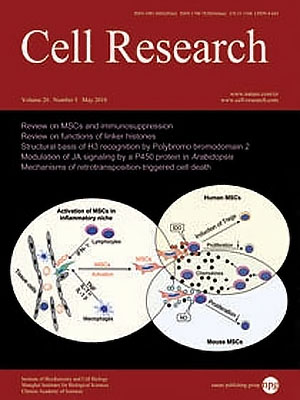
Volume 20, No 5, May 2010
ISSN: 1001-0602
EISSN: 1748-7838 2018
impact factor 17.848*
(Clarivate Analytics, 2019)
Volume 20 Issue 5, May 2010: 587-598
ORIGINAL ARTICLES
Thyroid hormone controls the gene expression of HSV-1 LAT and ICP0 in neuronal cells
Gautam R Bedadala, Rajeswara C Pinnoji, Jayavardhana R Palem and Shao-Chung V Hsia
Department of Basic Pharmaceutical Sciences, University of Louisiana at Monroe College of Pharmacy, Monroe, LA 71209, USA
Correspondence: Shaochung Hsia,(hsia@ulm.edu)
Various factors/pathways including hormonal regulation have been suggested to control herpes simplex virus type 1 (HSV-1) latency and reactivation. Our computer analysis identified a DNA repeat containing thyroid hormone-responsive elements (TRE) in the regulatory region of HSV-1 latency-associated transcript (LAT). Thyroid hormone (triiodothyronine, T
3) functions via its receptor TR (thyroid hormone receptor), a transcription factor. Present study investigated the roles of TR and T
3 in HSV-1 gene expression using cultured neuoroblastoma cell lines. We demonstrated that liganded TR activated LAT transcription, but repressed infected cell protein no. 0 (ICP0) transcription in the presence of LAT TRE. Chromatin immunoprecipitation (ChIP) assays showed that TRs were recruited to LAT TREs independently of T
3 and hyperacetylated H4 was associated with the LAT promoter that was transcriptionally active. In addition, ChIP results showed that the chromatin insulator protein CCCTC-binding factor was enriched at the LAT TREs in the presence of TR and T
3. In addition, the BRG1 chromatin remodeling complex is found to participate in the T
3/TR-mediated LAT activation since overexpression of BRG1 enhanced the LAT transcription and the dominant-negative mutant K785R abolished the activation. This is the first report revealing that TR elicits epigenetic regulation on HSV-1 ICP0 expression in neuronal cells and could have a role in the complex processes of HSV-1 latency/reactivation.
Cell Research (2010) 20:587-598. doi:10.1038/cr.2010.50; published online 13 April 2010
FULL TEXT | PDF
Browse 2165


